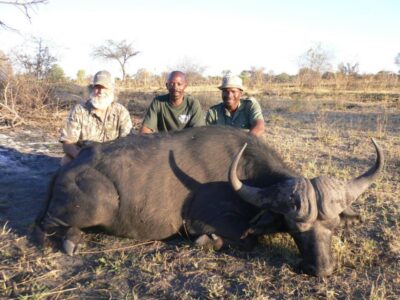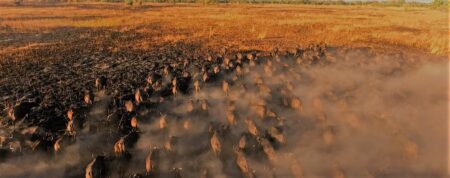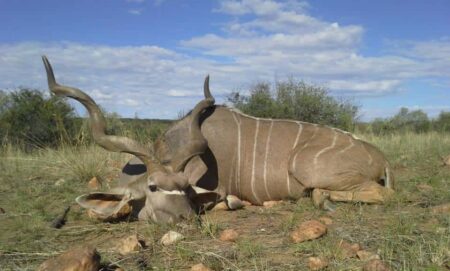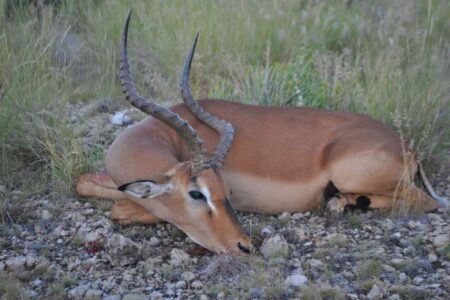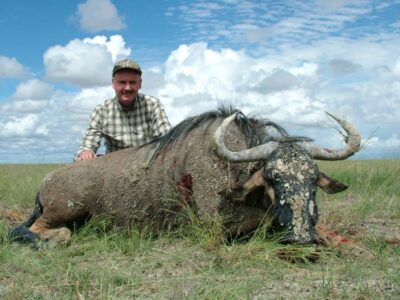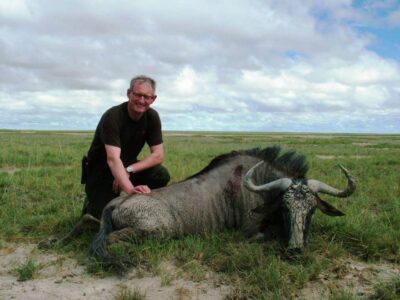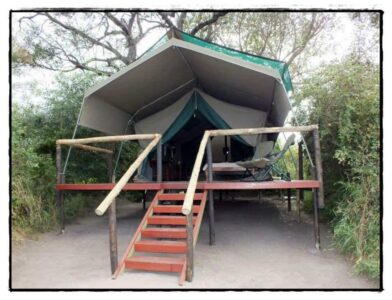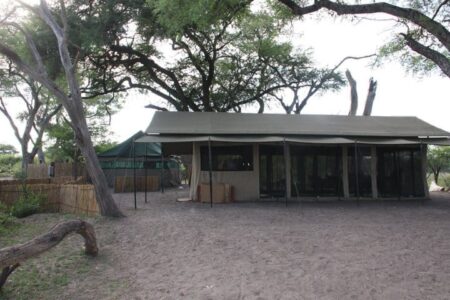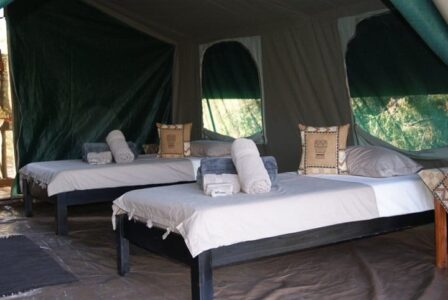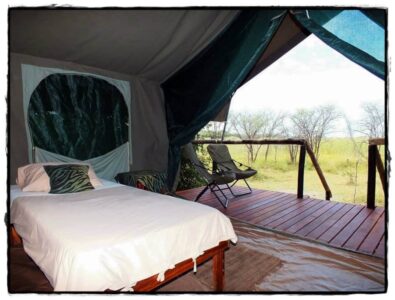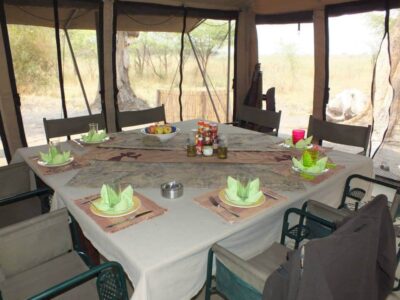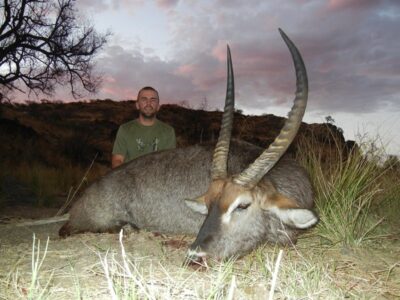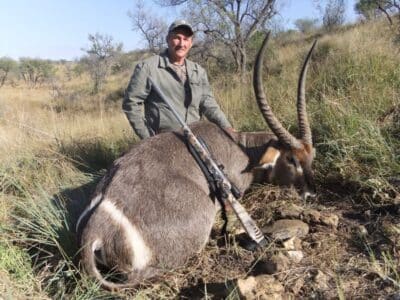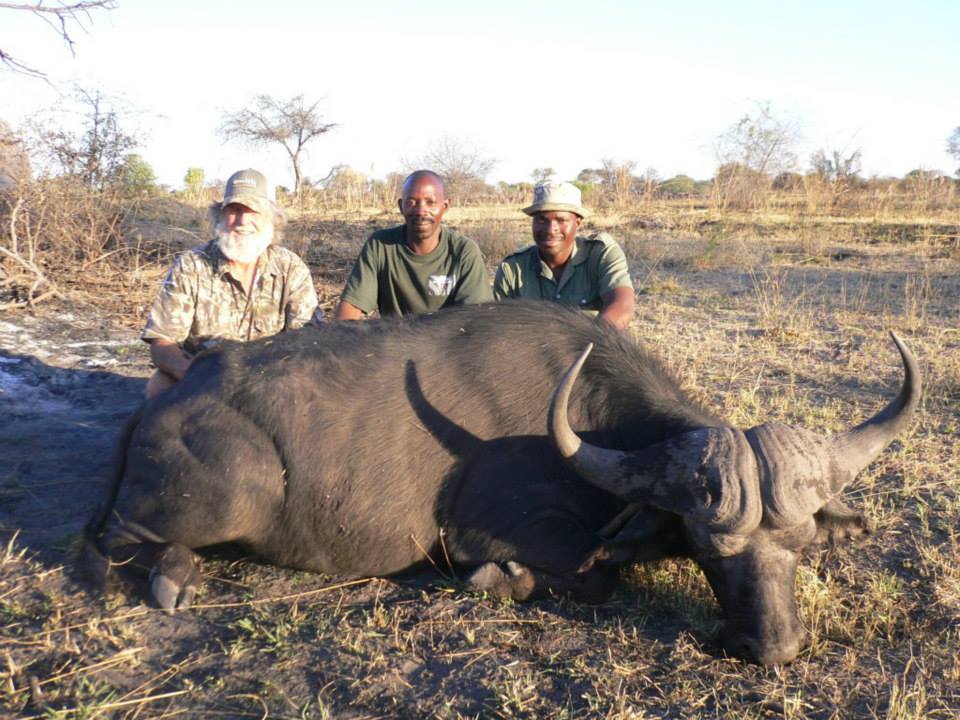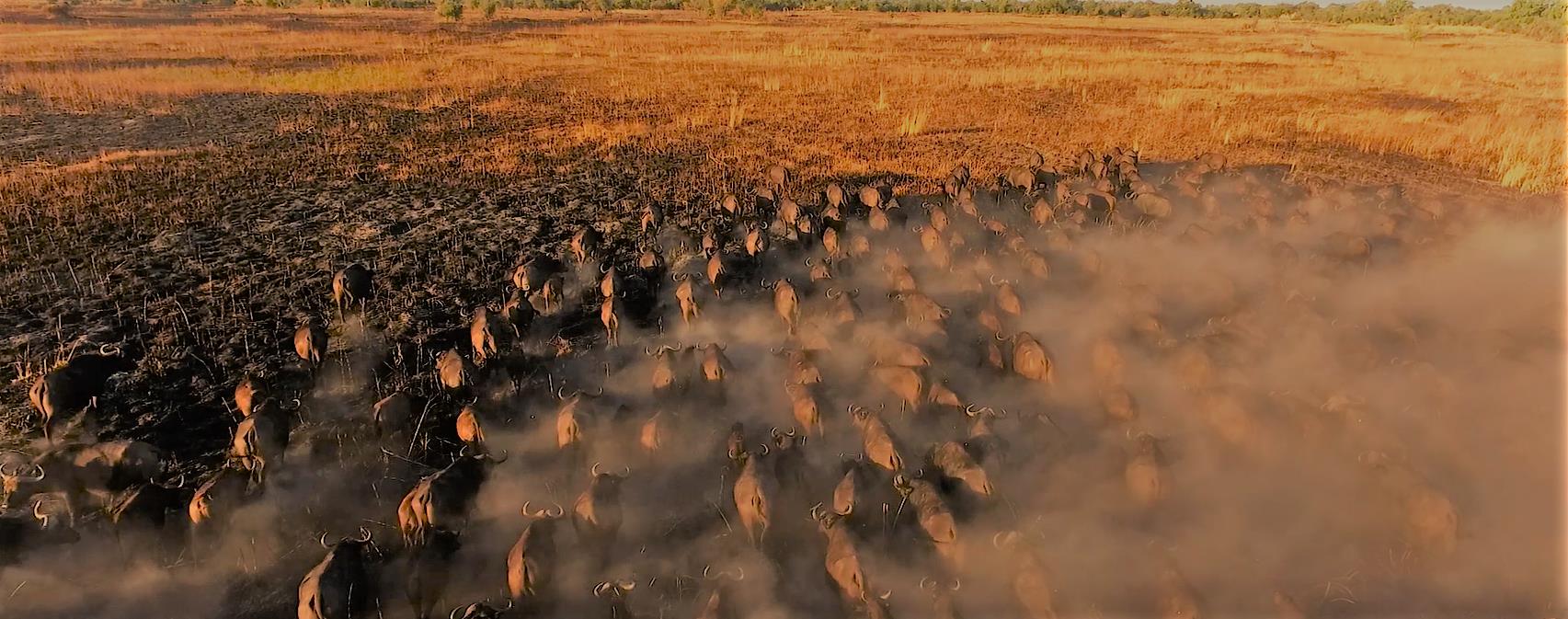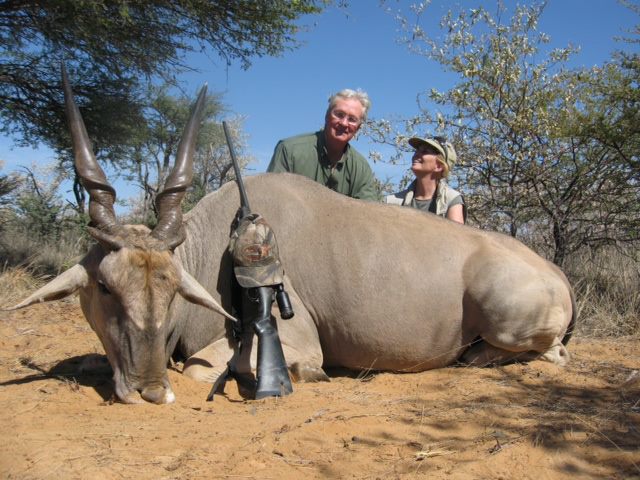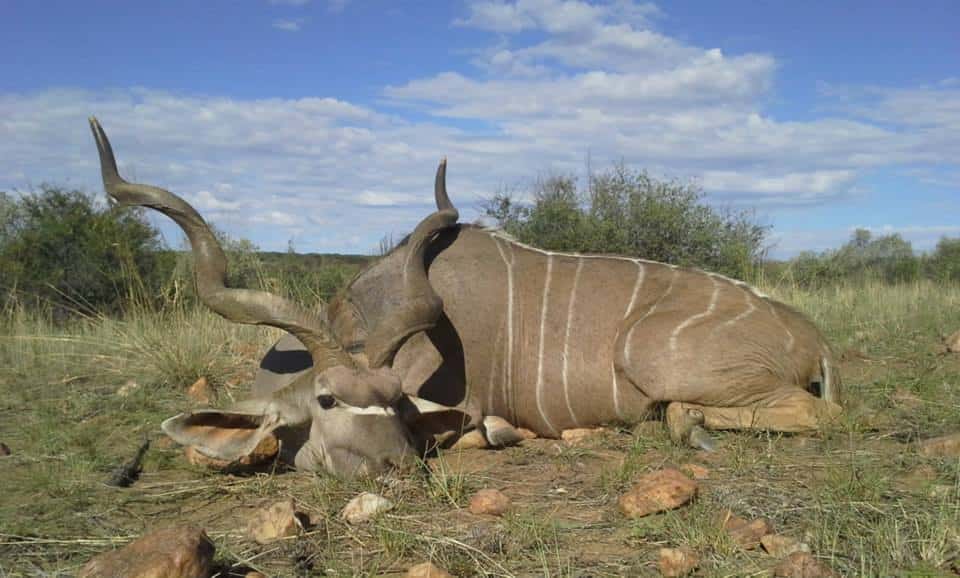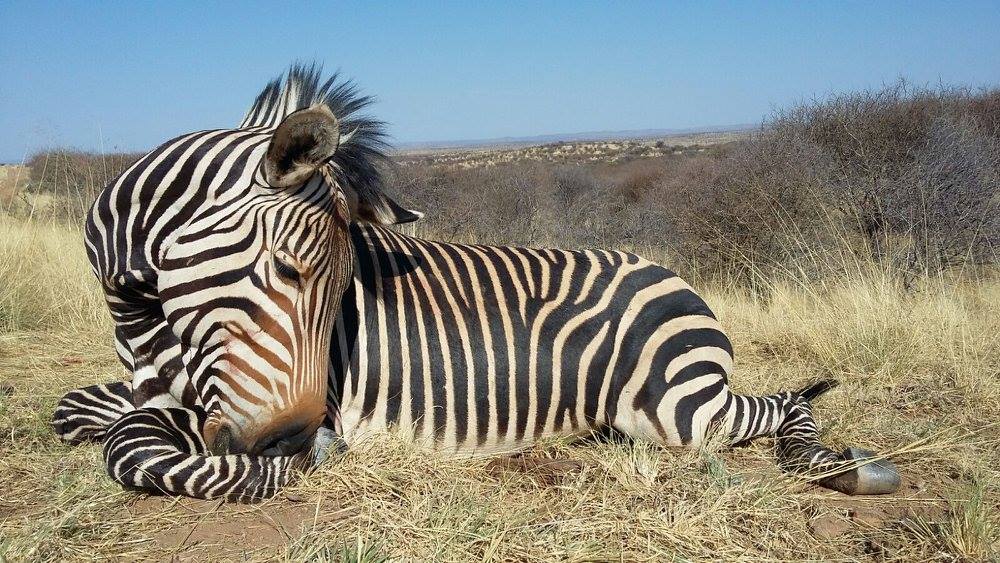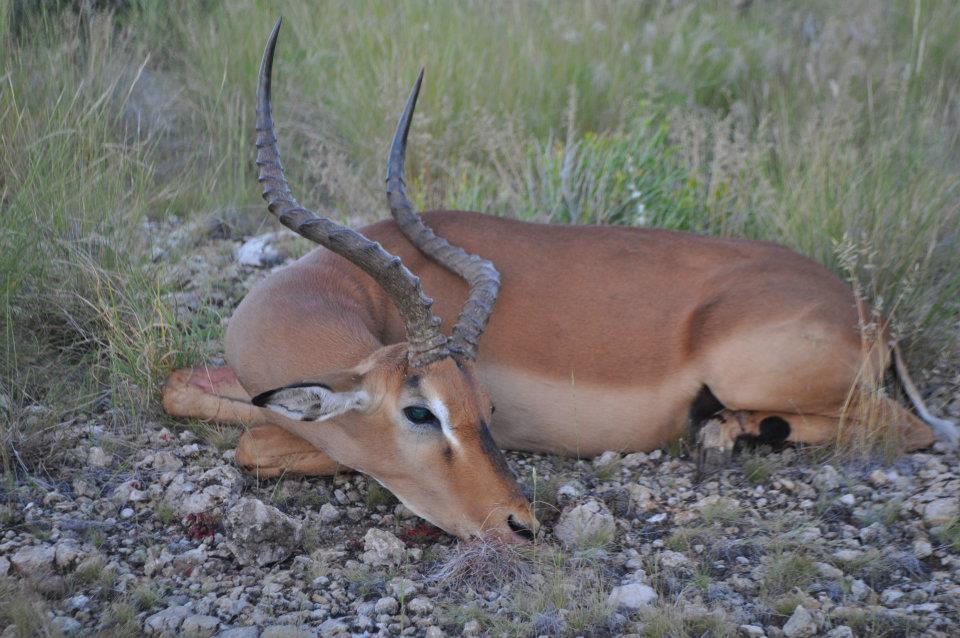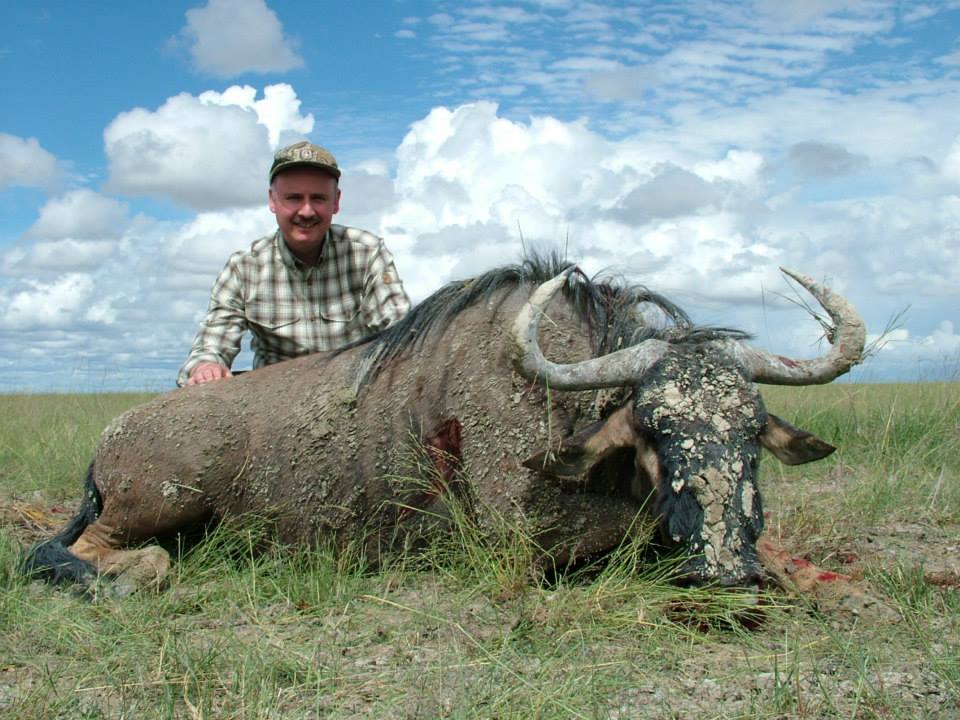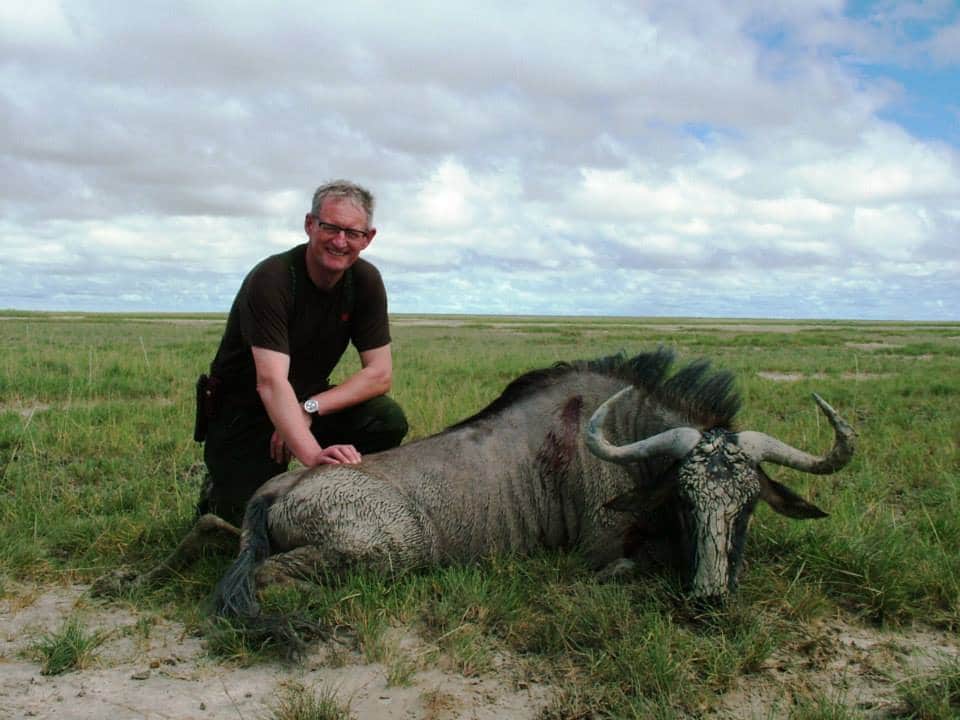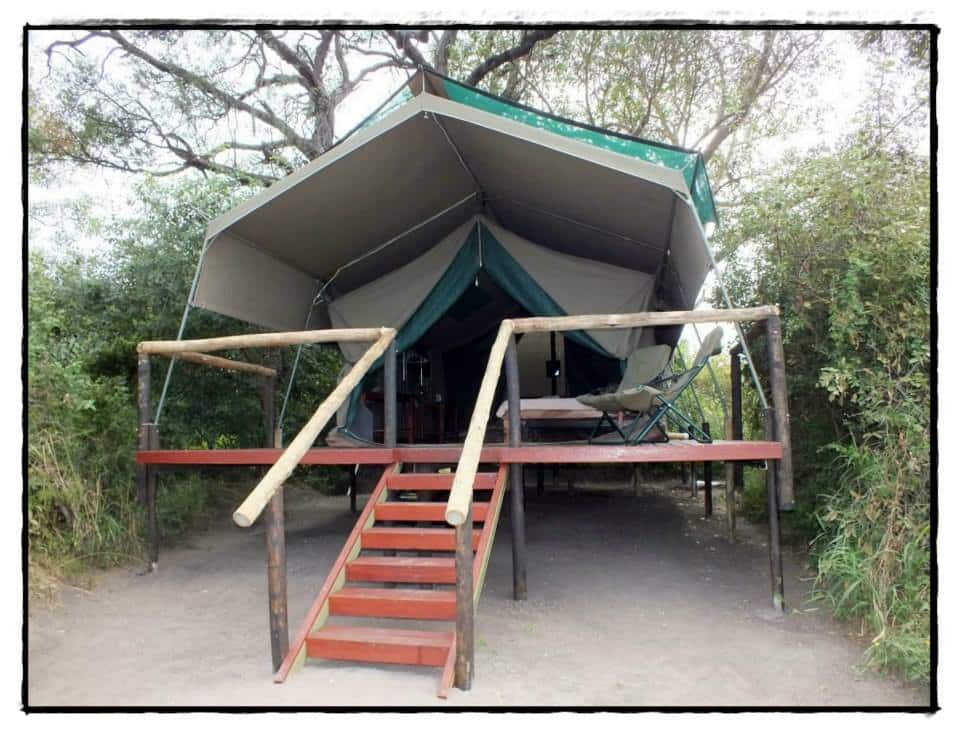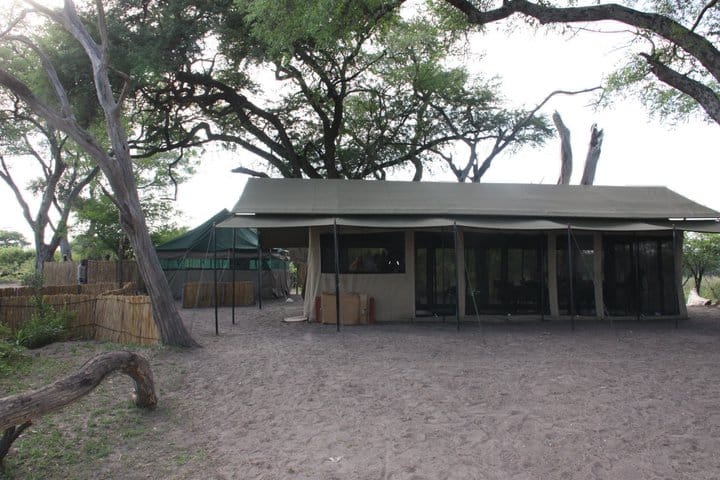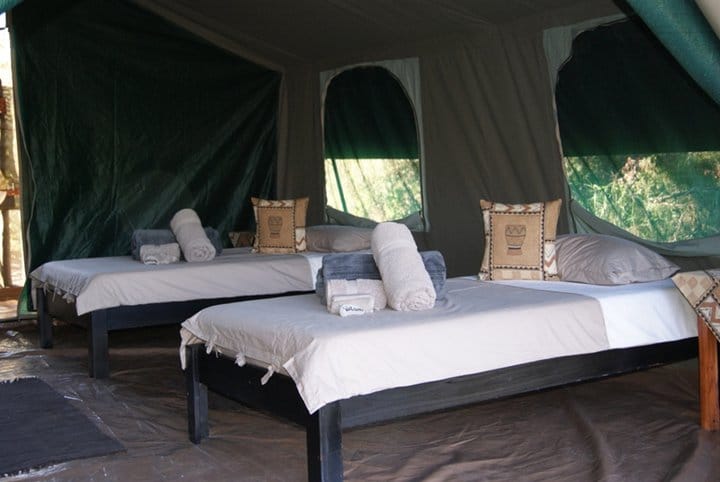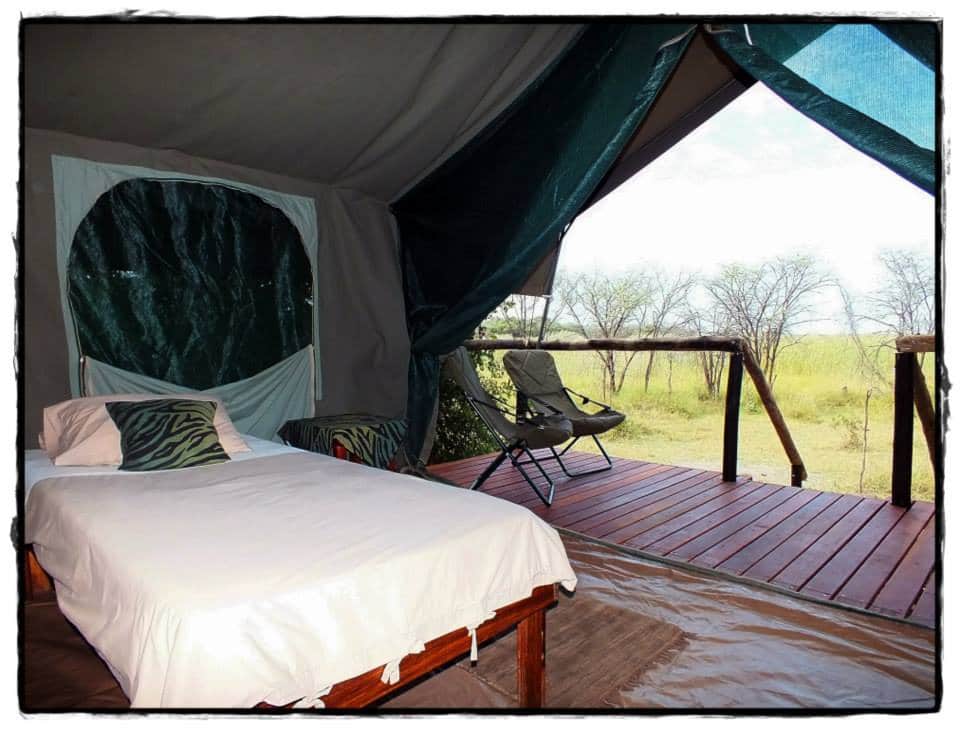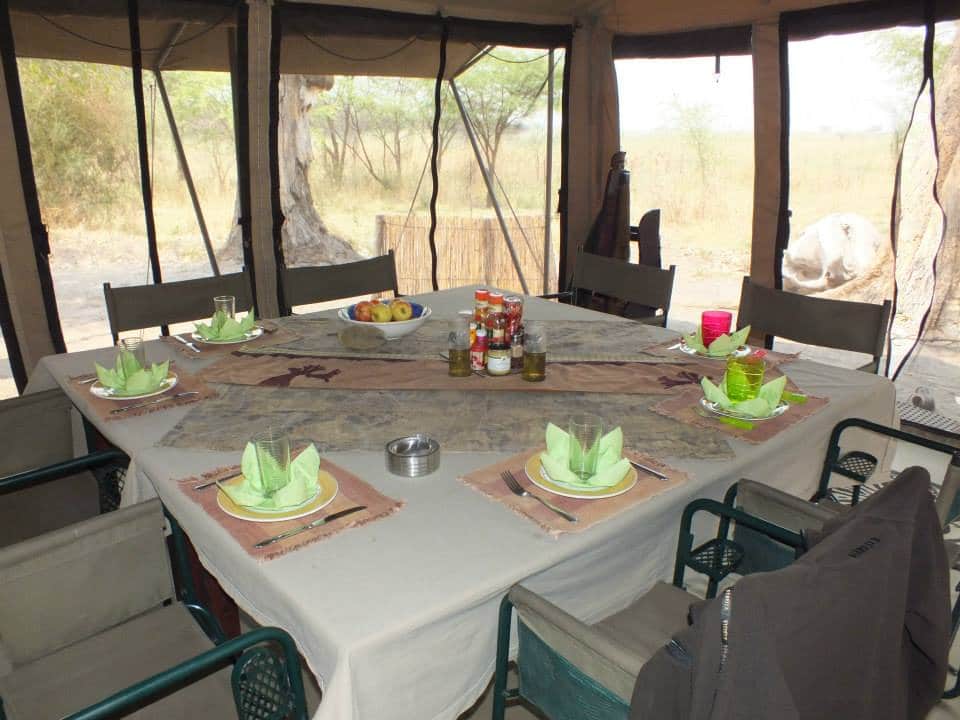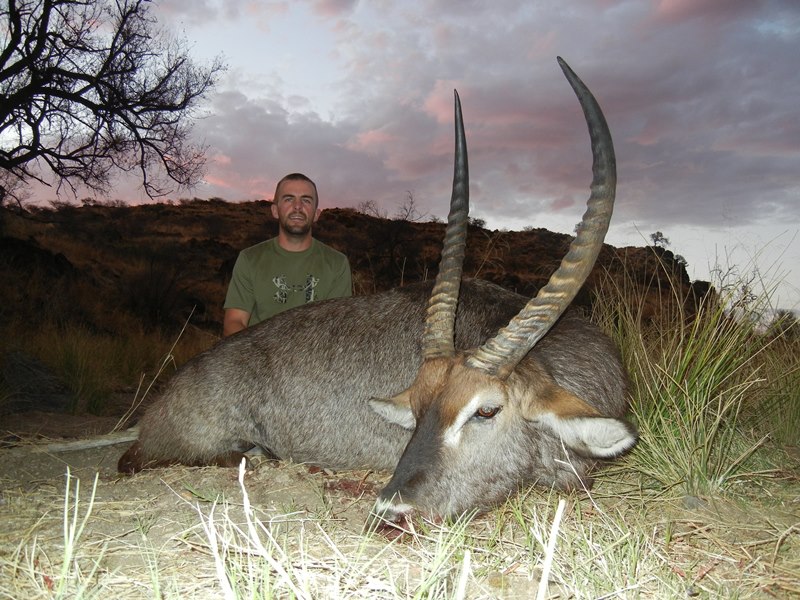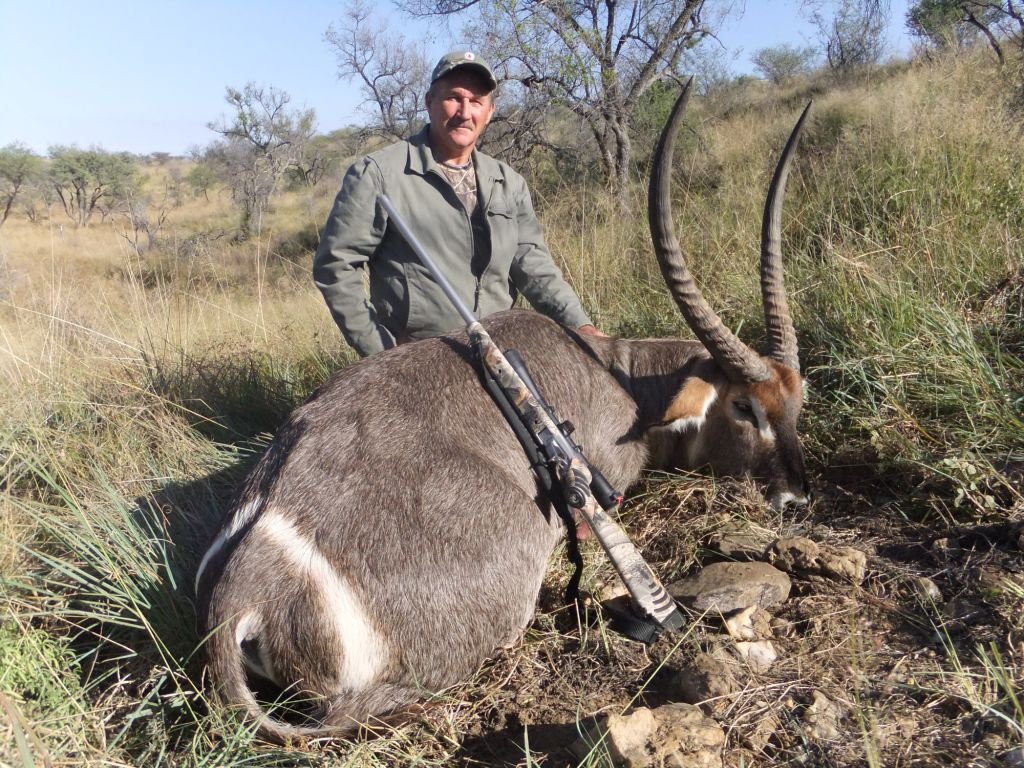10 days buffalo and antelope hunt at Caprivi 2:1
This offer is not active at the moment.
Cape Buffalo, Kudu, Zebra, Impala, Grey Duiker, Blue Wildebeest, Waterbuck, Eland, Reedbuck, Warthog
10 days buffalo and antelope hunt at Caprivi 2:1
This offer is not active at the moment.
Location: Caprivi, Namibia
From: Who is offering this hunt
Hunting time: 01. February - 30. November
Description:Few other game animals are held in higher esteem as a worthy hunting adversary than the African Cape Buffalo. The sheer thrill of hunting this mountain of muscle and attitude is unrivalled and quite addictive. Buffalo are similar to cattle in that they are herd animals, preferring the open ..more offer details
Other users also looked at the following:
Offer description
10 Tage Büffel- und Antilopenjagd in Caprivi 2: 1
Nur wenige andere Wildtiere gelten als ein würdigerer Jagdgegner als der afrikanische Kaffernbüffel. Der Nervenkitzel der Jagd auf diesen Berg von Muskeln und Attitüde ist unvergleichlich und macht süchtig. Büffel ähneln den Rindern, da sie Herdentiere sind. Sie bevorzugen die offene Savanne, in der Weide und Wasser reichlich vorhanden sind. Sie bevorzugen am kühlen Morgen und am Abend zu grasen und Schatten zu suchen, wenn es während des Tages wärmer wird.
Beide Geschlechter haben Hörner, wobei die Bullen mit zunehmendem Alter die begehrten knorrigen Buckel entwickeln. Trotz ihrer Größe sind sie im dichten Gebüsch äußerst gut getarnt. Ihre Sehkraft und ihr Gehör sind ziemlich schlecht, aber ihr Geruchssinn ist ausgezeichnet. Es ist viel schwieriger, einer Herde Büffel nahe zu kommen als einsamen Bullen.
Büffel werden im Allgemeinen zu Fuß gejagt und das macht sie gefährlich, besonders wenn sie verletzt oder gejagt werden. Oft erspähen Tracker oder Wildhüter neue Spuren am Wasserloch oder über Straßen. Ältere Bullen neigen dazu, sich von den Herden zu trennen und kleine Bachelor-Gruppen zu bilden, die oft Dagga-Jungen genannt werden (was Schlammjungen auf Suaheli bedeutet).
Im Caprivi, lieben es die großen Dagga-Boys sich im Laufe des Tages auf den Inseln im Dzoti hunting concession zu verstecken, umgeben von Schilf und Sumpf, um am Abend die Maisfelder zu "überfallen" . Unnötig zu erwähnen, dass die Einheimischen sehr daran interessiert sind, Jäger dafür zu bezahlen, diese Nachtjäger auszuschalten und mit frischem Fleisch versorgt zu werden !!
Ein guter Schuss auf den Büffel sollte lebenswichtige Organe treffen und dabei hoffentlich Knochen brechen. Jeder erfahrene PH sollte empfehlen, auf den "Heizraum" zu zielen. Sehr wenige Schüsse, egal wie groß das Kaliber ist, bringen einen ausgewachsenen Bullen zu Boden, es sei denn, der Schuss trifft auf die Wirbelsäule. Wenn der Büffel in einer Herde beschossen wird, wird das verwundete Tier in der Regel ausbrechen und Deckung suchen. Der Kaffernbüffel ist eines der wenigen Tiere, die absichtlich auf ihre eigene Spur zurückkehren, um zu "jagen" und auf ihren Verfolger zu warten. Gewöhnlich werden sie in der Nähe von Ameisenhaufen und umgestürzten Bäumen oder in Gebieten, die eine angemessene Deckung bieten, auf ihren Spuren zurückkehren.
Die Jagd auf Büffel und ihre gefährliche Natur, wenn er verwundet wurde, wurde von allen großen weißen Jägern und verschiedenen Videoaufnahmen dokumentiert. ABER SEIEN SIE WARNT - Jede Situation ist einzigartig und der Büffel ist eines der gefährlichsten Tiere, wenn er verletzt ist. Trotz ihrer Größe sind sie extrem schnell und listig im Verstecken, da sie absolut ruhig bleiben, bis die Jäger auf ihnen sind.
Die meisten PHS schwören auf die .375 H & H, wobei die .416s & .458s nach Preis und Leistung ein guter Kompromiss ist. Einige Jäger werden für den ersten Schuss eine weichnasige Runde laden, gefolgt von Vollmantelgeschoßent. Denken Sie daran, Sie müssen so viel Schaden wie möglich mit Ihrem ersten Schuss anrichten und schwere genarbte, gute Qualität weichnasige Geschosse sind von wesentlicher Bedeutung.
Der Kaffernbüffel ist ein sehr dickhäutiges Tier. Viele Jäger haben Büffel mit einem gut platzierten Schuss aus .270s und 30-06s getötet. In den meisten afrikanischen Ländern das gesetzliche Minimum des Kalibers die .375 H & H. Auf Büffel kann man keine zu große Waffe haben, vorausgesetzt, dass der Jäger dem Rückschlag vertraut ist und damit umgehen kann. Wenn Sie es sich leisten können, wäre eine gut geölt glänzende Doppelbüchse mit 500 Gramm Bleiladung die bevorzugte Wahl.
Die Trophäenbewertung auf Büffel ist ziemlich einfach, bleibt aber eine individuelle Sache. Alte einsame Bullen haben normalerweise Hörner mit charakteristischen knorrigen Buckeln. Die schiere Bedrohung und Präsenz dieser schlecht gelaunten alten Jungs ist eine ausgezeichnete Jagd und eine wohlverdiente Trophäe.
Ein gutes Paar an Hörnern beginnt mit einem dicken, schweren, breiten Kopf, der nach außen und nach unten weit über die Ohren läuft, bevor er sich nach oben und wieder zurück windet. Die Enden heben sich dann auf- und rückwärts, je höher desto besser. Tatsächlich basiert die Rowland-Ward-Messung auf der Auslage der Hörner, während SCI diese Messung als ergänzende Information verwendet.
Sie werden bei der Ankunft am Flughafen vom professionellen Jäger begrüßt und in das Jagdrevier begleitet. Kurz nach der Ankunft im Gebiet werden Sie den Schießstand besuchen, um die gesamte Ausrüstung für die Jagd vorzubereiten und zu überprüfen.
Das Frühstück ist normalerweise vor Sonnenaufgang, wo Sie mit Ihrem professionellen Jäger, Tracker und Fahrer jagen werden. Sie werden bei der Pirsch einiges Wild, das Sie auf Ihrer Wunschliste haben zu Gesicht bekommen. Wenn die Tiere während der heißesten Tageszeit im Schatten ausruhen, kehren Sie zurück zum Camp. Hier können Sie gut zu Mittag essen und sich von den normalen Jagdaktivitäten erholen. Nachmittags fahren Sie in den Busch bis zum Sonnenuntergang. Während der Rückfahrt zum Camp wird es dunkel, was bedeutet, dass die Temperaturen sinken und es wirklich kalt werden kann.
Nach der Jagd ist es möglich Swakopmund oder Windhoek zum Einkaufen zu besuchen und dann beginnt die Heimreise.
Few other game animals are held in higher esteem as a worthy hunting adversary than the African Cape Buffalo. The sheer thrill of hunting this mountain of muscle and attitude is unrivalled and quite addictive. Buffalo are similar to cattle in that they are herd animals, preferring the open savannah where grazing and water is plentiful. They tend to graze the cooler parts of the day from early morning and evening into the night and seeking shade as it gets hotter during the day.
Both sexes have horns, with males developing the much desired gnarled bosses as they get older. Despite their size, they are extremely well camouflaged in dense cover. Their eyesight and hearing is quite poor but their sense of smell is excellent. It is much harder to get close to a herd of buffalo than solitary bulls.
Buffalo are generally hunted on foot and this is what makes them dangerous, particularly when wounded or chased. Often trackers or game scouts will pick up fresh tracks at waterhole's or across roads. Older bulls tend to separate from the herds and form small bachelor groups often called Dagga boys (meaning mud boys in Swahili).
In the Caprivi, these big Dagga boys love to hide up during the day on islands in the Dzoti hunting concession, surrounded by swamp and reeds, before venturing out as night falls, to raid the locals maize crops. Needless to say the local people are very keen for paying hunters to take out these night raiders and provide them with fresh meat!!
The best shot placement for buffalo is to hit vital organs, hopefully breaking bone somewhere in the process. Any experienced PH should advise to go for the "boiler room". Very few shots, regardless of calibre will pull a mature bull to the ground unless the shot hits the spine. If in a herd, the wounded animal usually breaks away and heads to thick cover. Buffalo are one of the only animals that will purposefully circle back onto their own trail to "hunt" and lie in wait for their pursuer. Usually they will circle back on their trail near an anthill, a fallen tree or any area that provides decent cover.
Buffalo hunting and their dangerous nature when wounded has been documented by all the great white hunters and on various video footage. BUT BE WARNED - each situation is unique and buffalo are one of the most dangerous animals when wounded. Despite their size they are extremely quick and cunning at hiding, as they remain absolutely still until the hunters are right upon them.
Despite their size, Buffalo are excellent at blending in and when wounded they are notorious for doubling back onto their blood trail to surprise their attackers.
Most PHs swear by the .375 H & H as a starting point, with the .416s & .458s being a good compromise on price and power. Some hunters will load a soft-nosed round for the first shot, followed by solids as the animal moves off. Remember, you want to do as much damage as possible with your first shot and heavy grained, good quality soft-nosed bullets are essential.
Buffalo are a thick-skinned animal. Many people have killed Buffalo with a well placed shot from .270s and 30-06's. In most African countries the legal minimum calibre allowed to hunt Buffalo is the .375 H & H. However, with Buffalo you can never have too much gun, provided that you the hunter, can handle the recoil with confidence. If you can afford it, a well oiled gleaming double rifle packing 500 grains of lead would be the classic preferred choice.
Trophy size judgment on buffalo is quite easy but remains an individual choice. Old lone bulls usually have worn horns with characteristic gnarled bosses. The sheer menace and presence of these bad-tempered old boys make for an excellent hunt and well-deserved trophy.
A good set of horns starts with a thick heavy wide boss, running outwards and downwards (the deeper the curl the better) well past the ears before curling upwards and back in again. The points then raise upwards and backwards, the higher the better. As a rule, the further past the ears the outer upward curl of the horns are, the better the trophy. In fact, Rowland Ward measurement is based upon the spread of the horns while SCI uses this measurement as supplemental information.
You will be welcomed on arrival at the airport, by the professional hunter and escorted to the hunting territory. Shortly after arrival in the territory, you will visit the shooting range to prepare and check all equipment for the hunt.
After the hunt it is possible to visit Swakopmund or Windhoek for some shopping and then the journey home starts.
Territory information
Trophy fee
per 1 animal(s)
per 1 animal(s)
per 1 animal(s)
per 1 animal(s)
per 1 animal(s)
per 1 animal(s)
per 1 animal(s)
per 1 animal(s)
per 1 animal(s)
per 1 animal(s)
Travel date
0 chosen hunting day(s)
0 additional travel day(s)
Sum: 0 days with 0 overnights
Your selected travel date
05.07.2025
(Arrival day)30.11.2025
(Departure day)Daily rate and accommodation
Facilities:
More information: Breakfast is usually before sunrise, where after you will go hunting with your professional hunter, tracker and driver. You will be driving spotting game and do some stalks on animals that you have on your wish list. When the animals start hanging around in the shade during the hotter time of the day, you will be heading back to the camp. Where you will enjoy a good lunch and have some time off from the normal hunting activities. In the after noon you will be heading out into the bush until sunset. During your drive back to camp it will be dark, which means temperatures drop and it could really become cold.
€ 1.050,-
persons
€ 310,-
persons
Daily rates total for HUNTING DAY(S): € ,-
Other costs:
Flight Windhoek Airport - Mpacha Airport per person
Transfer:
Trophy treatment:
We normally ship trophies by airfreight within four weeks after completion of your safari. Your trophies should reach their destination within two months from that date. Taxidermy prices in Namibia are very affordable and the quality and workmanship is very good. Financially there is very little difference between the cost of shipping raw trophies or mounted ones. The normal completion time to mount trophies is approximately 8 – 10 months.
Shooting distances:
-
Caliber recommendation:
-
Missed shot:
0 % of the estimated trophy price
Payment:
Deposit: 50 % of the total price
Final payment: On site
Wounding:
100 % of the estimated trophy price
Wounded game is considered as harvested, when it can't be found after a professional, conscientious and thorough search.
Cancellation:
Deposits are non-refundable
Included in the offer:
- Accommodation
- Meals
- Beverages
- Hunting licence
- Guidance
- Accommodation before and after hunt
NOT included in the offer:
- Alcoholic drinks
- Gun rental
- Ammunition
- Taxidermist
- Trophy export
- Insurance
- Tips
- Activities, other than hunting
